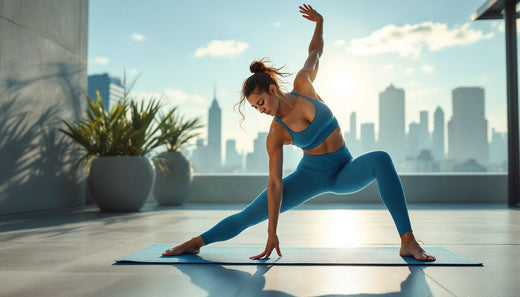

Vinyasa Flow
April 19 2009Here is a great article from Om Shanti: A Yoga Blog, that describes Vinyasa Flow. I thought I would share. At the bottom is a link for the full article.
—Rachel—
So what is it? Well, one way to describe vinyasa flow is in terms of the physical workout. In a vinyasa flow class, you can usually expect to sweat your butt off. Sometimes teachers even heat the room, which almost guarantees that you’ll be literally dripping with sweat by the end of class. Is it a hard workout? Well, that depends on your teacher. A really hard, advanced vinyasa flow class will, I promise you, be the hardest workout you’ve ever had. It’ll involve intense cardio and strength-building exercises, as well as some core work, a handful of asanas to increase flexibility, and some wildly fun acrobatic stuff that is reminiscent of Cirque du Soleil. There is quite possibly no better overall workout than a really strong vinyasa flow class. In fact, NFL and NHL teams are now incorporating vinyasa flow yoga into their training programs, not just because of the flexibility you gain from yoga (it is, by the way, a HUGE misconception that yoga just about flexibility), but because of all of its physical benefits. As one yoga website describes it, “vinyasa flow is a workout that will change your life, if you can survive it.” Now, to be perfectly honest, not all vinyasa flow classes are super difficult physical workouts. I’ve been to vinyasa flow classes where I didn’t even break a sweat. Needless to say, I never went back. But it is true that you need some considerable degree of flexibility and strength in order to do the harder asanas, so if you are new to yoga, you may have to spend a year or two in easier, less rigorous classes in order to build up the foundation of flexibility/strength necessary for the more difficult asanas.
Another way to describe vinyasa flow yoga is in terms of the mental workout, so to speak. Many vinyasa flow classes incorporate some kind of meditation before and/or after the class. Moreover, the practice itself is often considered a “moving meditation”. So, it’s not usually considered appropriate to talk during class, just as it would not be considered appropriate to talk during, say, a church sermon. And, indeed, many yogis, including myself, take the yoga practice as a kind of quasi-religious experience, and don’t appreciate it when people are disrespectful of the practice by talking unnecessarily during a yoga class. So what are we meditating on when we do vinyasa flow yoga? Initially, when you first start yoga, all you can think about is how much pain you are in and how much your muscles burn. But, in time, you may learn to simply observe the sensations and thoughts that pass through your body and mind. This neutral observation process is meditation. In observing the movements and fluctuations of the body and mind throughout the asana practice, we learn to see that our bodies, physical sensations, and even our mental activity are not things that are integral to our true selves. Our true selves stand outside of these temporary things, and, as we come to learn and experience this firsthand, we learn how to be calm and peaceful in the midst of great challenge. A pretty useful life lesson, I think. Even if we don’t buy into this stuff about inner peace and our “true selves”, at the very least, it’s fairly well established that vinyasa flow yoga does effectively promote overall mental health, lower stress, increased focus and concentration, and better sleep.
http://yogaisforlovers.wordpress.com/2007/01/10/what-is-vinyasa-flow-yoga/
